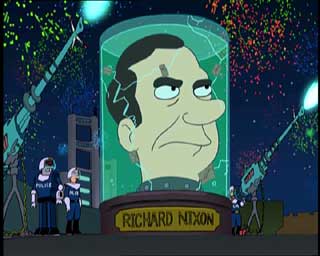The Tristan Chord
I've solved the Tristan Chord conundrum - what can I say, it's what I do.

The "Tristan Chord" is in the second full bar, spelled from the bottom up as F B D# G#. When I was in college studying this, the answer was on the tip of my tongue, but I just couldn't quite get to it. Obviously, it has the shape of an F half diminished chord, but the harmonic function is really one of F-E in the bass. What Wagner's done here is soured a French Augmented 6th chord - which would be spelled F A B D#, or in his voicing, F B D# A - with a suspension on the downbeat. He delayed the A by placing a G# on the beat, resolving to the A afterward.
That explanation alone would be dandy, if it weren't for the fact that the chord sounded so good, begging for an isolated analysis. The chord's pleasant sound is explained by two things: 1.) It's a half diminished chord, which our ear finds comfortable; 2.) Half diminished chords always sound better than French 6th chords, because French 6th chords are comprised of two interlocking tritones, and sound a little ugly in the first place. Furthermore, Wagner places another suspension - the A# - on the subsequent downbeat, thus confirming that the harmonic idiom at this point is one of downbeat suspensions.
But let's say that I'm an idiot, there aren't two suspensions in a row, and it really is a chord unto itself. Fine. In that case, Jazz theory explains it handily. It sounds like an F chord, leading to an E chord. Tritone substitution determines the downbeat of the second full bar to be a B13(b5) which nicely prepares the E chord in bar three. B13(b5) in the key of A minor: That's a V/V, pure and simple.
Consider this Gordian Knot cut.


<< Home